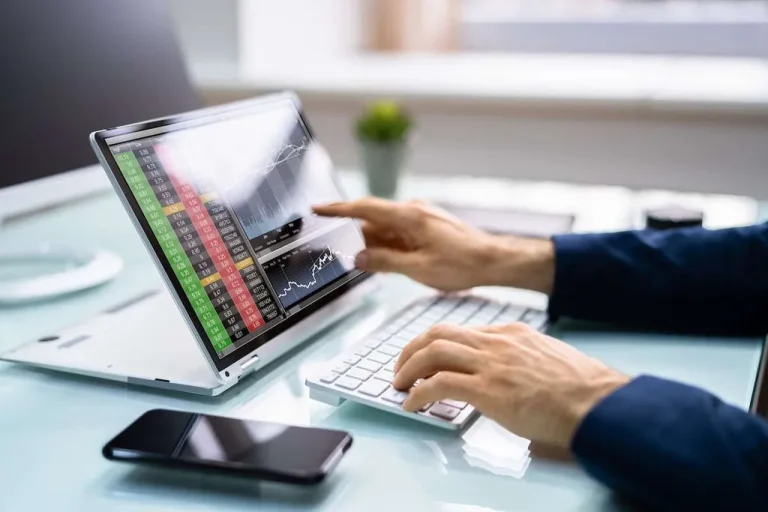What is CFD Liquidity? How to Choose the Best Provider
Content
CFD trading is subject to regulations imposed how to choose liquidity provider by financial authorities in different jurisdictions. Traders should be aware of the specific rules and compliance requirements set by the regulatory bodies in their country of residence. Because the industry is not regulated and there are significant risks involved, CFDs are banned in the U.S. by the Securities and Exchange Commission (SEC). The U.S. Securities and Exchange Commission (SEC) has restricted the trading of CFDs in the United States, but nonresidents can trade using them. This information is provided for informative purposes only and should not be construed to be investment advice. In some ways, the CFD market remains somewhat traditional in respect to its predominantly over-the-counter (OTC) nature, rather than the usual regulatory trend which encourages more central clearing.
What Drives Dealers to Trade CFDs?

The platform provides advanced charting tools, including ProRealTime, and extensive educational resources for traders of all levels. IG is regulated by top-tier authorities, ensuring a secure trading environment. It is well-suited for experienced traders seeking advanced tools and Payment gateway features. For a more detailed analysis and specific recommendations tailored to different needs, you can refer to our comprehensive guides.
Liquidity of the Underlying Asset

At its core, a Contract for Difference is a financial derivative that allows traders to speculate on the rising or falling prices of fast-moving global financial markets. When liquidity is provided by a CFD provider, it goes to the liquidity pools within the liquidity ecosystem that each broker or exchange has. Each financial asset class, be it crypto CFDs, currency pairs or commodities, has its own liquidity pool, in which the liquidity is evenly distributed between the assets. B2Broker is one of the world’s largest CFD liquidity providers, servicing brokerage firms globally. It offers a multi-currency account with over 800 tradable assets and seven asset types. The firm is the world’s top supplier of CFDs, https://www.xcritical.com/ offering unparalleled CFD liquidity to all customers.
- A traditional trade would mean bearing the full cost of the shares upfront.
- If the broker becomes insolvent or fails to meet its obligations, traders may face losses.
- I strive to foster understanding, inspire confidence, and catalyze growth in these dynamic sectors, contributing to the forward momentum of our digital financial future.
- The trader’s net profit is the price difference between the opening and closing-out trade (minus any commission or interest).
- These platforms enable traders to speculate on the price movements of assets like stocks, Forex, commodities, indices, and cryptocurrencies without owning the underlying asset.
- Maximal Extractable Value in crypto is a crucial mechanism that has both positive and negative connotations.
- The only difference is that instead of using fiat money, crypto CFDs use cryptocurrencies.CFDs on cryptocurrencies are a fantastic method to trade digital currencies without needing to make a real purchase.
Areas of CFD Trading Platforms Usage
The lot size is substantialBecause of the inherent volatility of CFD holdings, a large number of brokers provide a wide range of transaction sizes. A broad spectrum of traders, including novices and casual investors who want to experiment with new methods while avoiding risk may consequently find them appealing. CFD liquidity can’t be ignored as the structure of CFD asks for somewhat more liquidity as the leverage is different and the core transaction is just being based on the basis of the margin of profit and loss. The vacuum of CFD liquidity can’t be eradicated as it works as an oil to the engine. The trader can make money even in the times when the market witnesses a fall. This factor excites the traders to invest more money in the market in hope of better margin profits.
This amplifies potential profits, making it an attractive tool for those seeking higher returns. Liquidity refers to how quickly and easily an asset can be bought or sold in the market at a price reflecting its intrinsic value. In periods of low liquidity, executing trades at desired prices can become challenging, affecting the overall trading strategy.
Built for scalability, it ensures low-latency market access for an enhanced trading experience. It refers to various entities that operate in compliance with local regulations and hold licenses in their respective countries. The content on this website is meant to showcase the technological solutions and services offered by these entities. Please note that the information on this site is intended for use by residents of countries or jurisdictions where such distribution is not in violation of local regulations. Leveraged trading is at times referred to as ‘trading on margin’ since the margin – the budget required to open and maintain a position – represents only a fraction of its total size.
The contract stipulates that the difference between the opening and closing prices of the asset will be exchanged between the trader and the broker. This can lead to potential investment opportunities, provided traders effectively manage risks and understand the dynamics of the assets they trade. CFD trading involves costs such as spreads, overnight financing fees, and, in some cases, commissions. These costs can impact overall profitability, especially for frequent traders. Novice traders may find it challenging to navigate these complexities, and sudden market movements can result in unexpected losses. CFDs allow traders to use leverage, meaning they can control larger positions with a smaller amount of capital.
Tamta is a content writer based in Georgia with five years of experience covering global financial and crypto markets for news outlets, blockchain companies, and crypto businesses. With a background in higher education and a personal interest in crypto investing, she specializes in breaking down complex concepts into easy-to-understand information for new crypto investors. Tamta’s writing is both professional and relatable, ensuring her readers gain valuable insight and knowledge. The liquidity of CFDs helps to maintain an acceptable level of risk in transactions where high leverage and large volumes are used.
Suppose a trader wants to buy CFDs for the share price of GlaxoSmithKline. The trader expects that the share price will increase to £24.80 per share. Investors can use CFDs to make bets about whether or not the price of the underlying asset or security will rise or fall. If the trader who has purchased a CFD sees the asset’s price increase, they will offer their holding for sale. The platform processes up to 3,000 requests per second for instant execution during high volatility.
Finance Strategists has an advertising relationship with some of the companies included on this website. We may earn a commission when you click on a link or make a purchase through the links on our site. All of our content is based on objective analysis, and the opinions are our own.
A contract for differences (CFD) is an agreement between a trader and a financial institution in which the investor bets on the future value of an asset. For example, broker CMC Markets, a U.K.-based financial services company, charges commissions that start from 0.10%, or $0.02 per share, for U.S.- and Canadian-listed shares. The opening and closing trades constitute two separate trades, meaning the trader is charged a commission for both trades. The costs of trading CFDs include a commission (in some cases), a financing cost (in certain situations), and the spread—the difference between the bid price (purchase price) and the offer price at the time you trade. As we have seen, liquidity is important for all tradable assets so that transactions can be completed as quickly and cost effectively as possible. The growing popularity of the CFD market has been accompanied by new participants from both retail and institutional backgrounds, including online trading firms and individuals, along with intermediate brokers.
Real-time price updates ensure accuracy, while advanced algorithms optimise trade efficiency. Below is an overview of some of the best CFD trading platforms available, designed to cater to different trading styles, levels of expertise, and personal preferences. CFD trading often has lower transaction costs compared to traditional trading methods, such as stock trading. If the asset’s price increases, the buyer (long position) receives the difference from the seller (short position), and vice versa if the price decreases. CFD trading is subject to regulations but some jurisdictions lack regulation, but the level of oversight varies by jurisdiction. However, traders should use regulated brokers to ensure fair and transparent trading conditions.
The liquidity of CFDs makes it possible for brokers to provide ideal trading conditions for various financial assets. However, trading CFDs is a risky business relative to other forms of trading. Most successful CFD traders are veteran traders with a wealth of experience. The first trade creates the open position, which is later closed out through a reverse trade with the CFD provider at a different price. To buy, a trader must pay the ask price, and to sell or short, the trader must pay the bid price.

